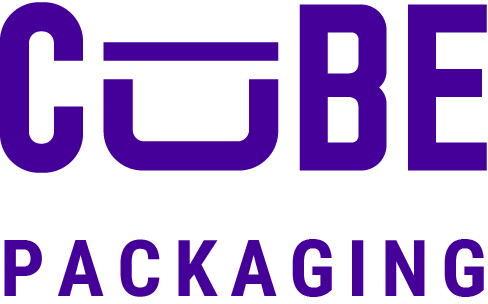Table of Contents
ToggleSave 40-70 % with CuBE Reusable Food Containers
U.S. & Canadian foodservice and retail operations spend $30 B a year on disposables. Slash recurring costs, landfill fees and plastic-ban risk by switching to CuBE’s durable, reusable containers. [1]
Single-use containers like cups, boxes, and deli tubs. are paid for once, used once, and then thrown away—leading to a continuous cycle of repurchasing.
CuBE offers a better way: reusable containers that can help businesses reduce those recurring costs by 40–70% in just two years [2].
The Disposable Dilemma
The problem?
Recurring spend on disposables, rising landfill fees, and unpredictable price hikes on paper and plastic goods.
The solution?
CuBE’s durable, reusable containers—designed to be washed, restacked, and reused. It’s a smarter system that cuts both your purchasing and trash hauling bills.
Reusable systems don’t just reduce waste; they reshape your cost structure. By eliminating repeat orders and reducing trash weight, operators can drive significant savings without compromising on safety, quality, or performance.
The Real Cost of Single-Use
Single-use containers might seem like a cheap and easy solution. But the full cost?
That’s a different story. Once you account for raw material costs, shipping, storage, procurement overhead, and waste-hauling contracts, the price tag goes up fast.
Additional costs include:
- Frequent reordering and vendor management
- Storage inefficiencies from bulky packaging
- Waste disposal and landfill fees
- Municipal surcharges and environmental compliance
On top of all that, you’re paying again to throw them away.
Did you know? According to the U.S. EPA, foodservice operations generate millions of tons of disposable waste annually—leading to billions in waste management costs. Sources – US EPA – National Overview: Facts and Figures on Materials, Wastes and Recycling | US EPA
What Reusables Help You Avoid
With CuBE’s reusable system, you can:
- Eliminate the need for constant reordering
- Reduce trash volume and pickup frequency
- Lower exposure to new plastic bans and fees
It’s about more than just saving money it’s about building smarter, future-ready operations.
The Cost-Per-Use Advantage
Unlike disposables, reusable containers are a capital investment—paid for once and used hundreds of times. That long life cycle is what makes them so cost-effective.
Let’s break it down: Cost Per Use = Total Purchase Cost ÷ Number of Uses
For example, a $5 container used 200 times only costs $0.025 per use—far less than the $0.07–$0.10 per-use cost of a disposable.
Break-even often occurs within 30–60 uses. From there on, it’s pure savings.
What Makes the Numbers Work
- Durability: CuBE’s containers are built to last, with many surviving 500+ commercial wash cycles.
- Bulk pricing: The more you buy, the more you save. Volume discounts can reduce per-unit costs by 15–30%.
- Lower trash fees: Fewer disposables mean less waste and fewer hauls.
Buying Smarter with CuBE
When you’re managing multiple locations or moving a high volume of meals, every dollar counts. CuBE helps operators maximize budgets with bulk pricing, efficient shipping, and consolidated invoicing.
Here’s how:
- Tiered discounts on larger orders
- Locked-in pricing to avoid market volatility
- Palletized shipments sorted by location
- Lower freight costs per unit
Whether you’re an independent café or a national chain, CuBE helps you scale reuse without the headache.
Added Efficiency in the Kitchen
CuBE’s containers aren’t just cost-effective—they’re designed to make day-to-day service smoother:
- Airtight lids and sturdy construction help reduce spoilage
- Uniform containers stack neatly, cutting down clutter
- Teams save time on dishwashing and inventory rotation
One Toronto-based restaurant group saw a 35% drop in trash pickups after switching to CuBE for sides and sauces. Less garbage means more focus on service.
A Retail Win: Shelf Appeal Meets Shrink Control
In grocery and convenience retail, food storage containers aren’t just functional—they’re part of the brand experience. Reusable containers offer stronger shelf presentation, consistent sizing, and tighter lid seals that reduce shrink from spills or product damage.
What that means:
- Cleaner, more uniform planograms
- Better stackability and product visibility
- Fewer damaged goods and write-offs
Reusable packaging also communicates values. Surveys show nearly 80% of Gen Z consumers are willing to pay more for sustainable packaging—and they notice when a brand walks the talk.
The CuBE Advantage
CuBE isn’t just selling containers. We partner with foodservice and retail operators to implement reuse systems that make economic and operational sense.
Here’s what sets us apart:
- Containers made from durable, food-grade recycled polypropylene
- Manufactured in North America for faster turnaround and lower emissions
- Lean production processes for tighter quality control
- Transparent warranty coverage and volume-based replacements
And when you need support, CuBE’s regional service teams are ready to help you roll out, scale up, and stay running.
Ready to Rethink “Single-Use”?
With CuBE’s reusable solutions, your operation can:
- Cut packaging costs and landfill fees
- Improve kitchen and shelf efficiency
- Boost sustainability metrics and brand equity
Let’s run the numbers together.
→ Explore CuBE’s reusable foodservice containers
→ Explore CuBE’s reusable retail food storage containers
Stats & Sources
- https://www.pwc.com/gx/en/news-room/press-releases/2024/pwc-2024-voice-of-consumer-survey.html
- https://www.esgtoday.com/young-shoppers-lead-the-charge-for-sustainable-packaging-alpla-survey-reveals-generational-shift/
- https://www.paddle.com/blog/volume-discount-pricing
https://www.overeasyoffice.com/blog/comprehensive-guide-to-calculating-restaurant-overhead-rate - https://www.ubs.com/global/en/sustainability-impact/sustainability-insights/2024/true-cost-of-plastic.html
Related
- The Environmental Impact of Single-Use vs. Reusable Food Containers
- 5 Tips for Safe, Fresh & Festive Holiday Takeout Food Storage
- Square Reusable Containers For Meal Prep – Environmental Benefits
- Rectangular Food Containers – Eco-Friendly, Versatile & Sustainable
- Custom Food Containers for Food Service: Why Branding Matters?
- Why Every Family Should Consider Switching to Reusable Food Storage Containers
- How to Choose the Right Eco-Friendly Material for Your Food Storage Containers
- Why Food Distributors Should Invest in Sustainable Food Container Solutions
- Square Food Containers – Maximize Food Storage with Sustainability
- Creative Ways to Reuse Your Food Containers at Home
